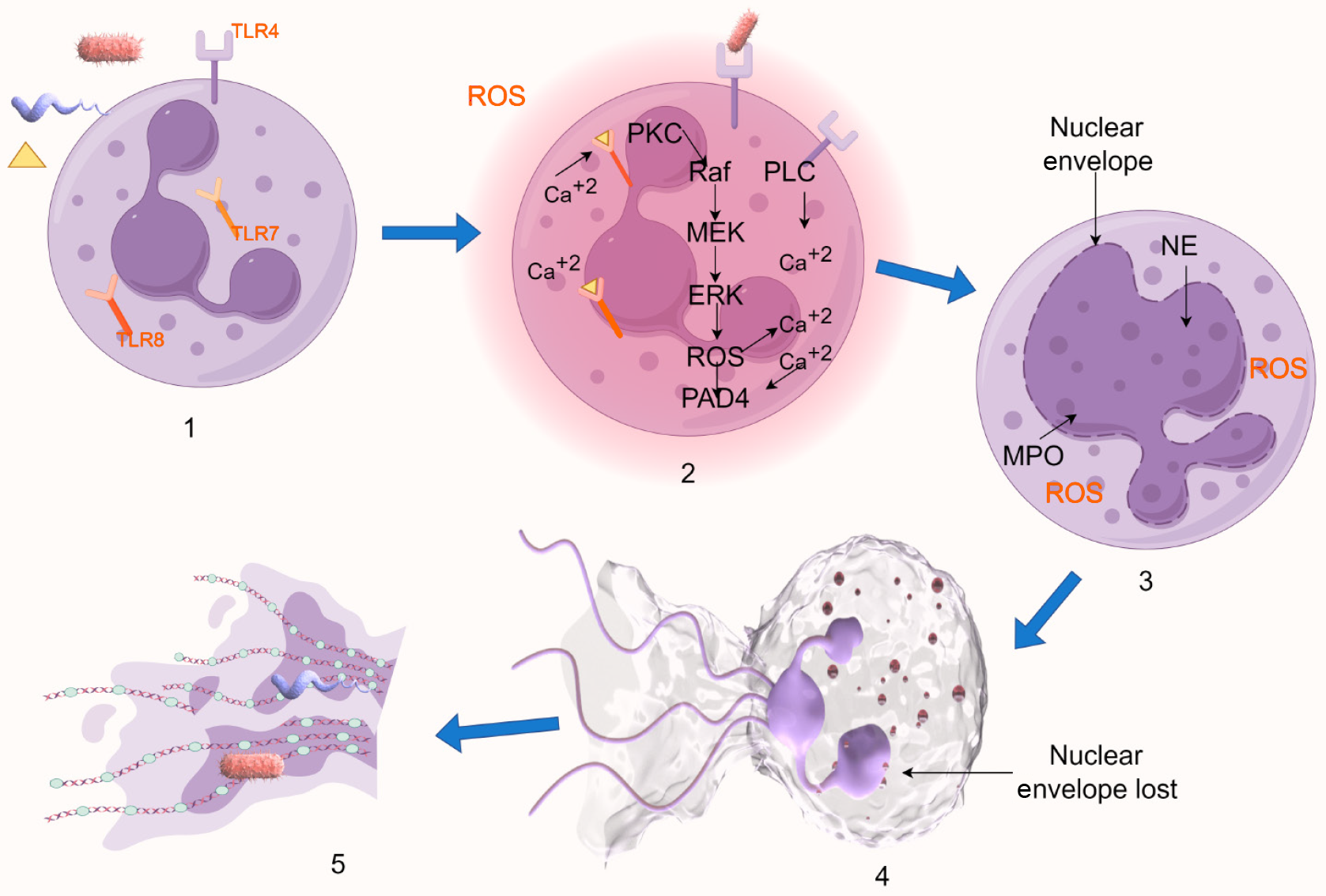Copyright
©The Author(s) 2025.
World J Orthop. May 18, 2025; 16(5): 106377
Published online May 18, 2025. doi: 10.5312/wjo.v16.i5.106377
Published online May 18, 2025. doi: 10.5312/wjo.v16.i5.106377
Figure 1 Schematic diagram of suicidal NETosis.
1: Receptor-mediated stimulus detection initiates the signaling cascade; 2: The Raf/MEK/ERK pathway activation and elevated calcium levels trigger gp91phox phosphorylation, enabling nicotinamide adenine dinucleotide phosphate oxidase assembly and reactive oxygen species generation; 3: Reactive oxygen species-dependent mechanisms facilitate nuclear translocation of azurophilic granule components (elastase and myeloperoxidase), inducing chromatin decondensation and nuclear morphological changes; 4: Nuclear envelope disintegration allows mixing of decondensed chromatin with cytoplasmic proteins; 5: Plasma membrane rupture results in the release of chromatin-protein complexes as extracellular traps. Created by Figdraw, ID: SPUAUc244c. TLR: Toll-like receptor; ROS: Reactive oxygen species; PKC: Protein kinase C; PAD4: Peptidyl arginine deiminases 4; NE: Neutrophil elastase; MPO: Myeloperoxidase.
- Citation: Sun GJ, Xu F, Jiao XY, Yin Y. Advances in research of neutrophil extracellular trap formation in osteoarticular diseases. World J Orthop 2025; 16(5): 106377
- URL: https://www.wjgnet.com/2218-5836/full/v16/i5/106377.htm
- DOI: https://dx.doi.org/10.5312/wjo.v16.i5.106377









